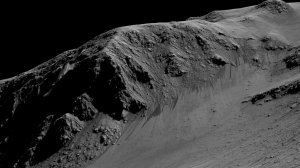The National Aeronautics and Space Administration (Nasa), the US space agency, announced on Monday that flowing water almost certainly exists on Mars today. From high-resolution images, scientists have discovered evidence of hydrated salts that are produced by salt, or briny, water.
The images were gathered by the Compact Reconnaissance Imaging Spectrometer onboard the Mars Reconnaissance Orbiter spacecraft. Images were taken of four separate locations.
The phenomena that were targeted were dark streaks, known as slope lineae. These are narrow streaks, which are less reflective of light than the surrounding terrain, which occur on Martian slopes during warmer months. They appear and grow slowly, down the slope, in these periods.
In the abstract of their paper published in the journal Nature Geoscience, the research team (led by Lujendra Ojha) who made the discovery stated that they found "evidence for hydrated salts in all four locations in the seasons when recurring slope lineae are most extensive, which suggests that the source of hydration is recurring slope lineae activity."
The salts detected are magnesium perchlorate, magnesium chlorate and sodium perchlorate. "Our findings strongly support the hypothesis that recurring slope lineae form as a result of contemporary water activity on Mars," concluded the abstract. However, the source of the briny water is not yet known.
At the Nasa press conference announcing the discovery, the agency's Director of Planetary Science, Jim Green, observed that "Mars is not the dry, arid, planet we thought of in the past." Nasa Mars Exploration Programme lead scientist Michael Meyer pointed out that "[i]t took multiple spacecraft over several years to solve this mystery, and now we know there is liquid water in the surface of this cold, desert planet. It seems that the more we study Mars, the more we learn how life could be supported and where there are resources to support life in the future."
"These observations are giving us a much better view that Mars has resources that are useful to future travellers ...," said Nasa Associate Administrator (and former astronaut) John Grunsfeld. "I think we will send humans in the near future to Mars ... to be able to live on the surface, the resources are there."
EMAIL THIS ARTICLE SAVE THIS ARTICLE
To subscribe email subscriptions@creamermedia.co.za or click here
To advertise email advertising@creamermedia.co.za or click here











